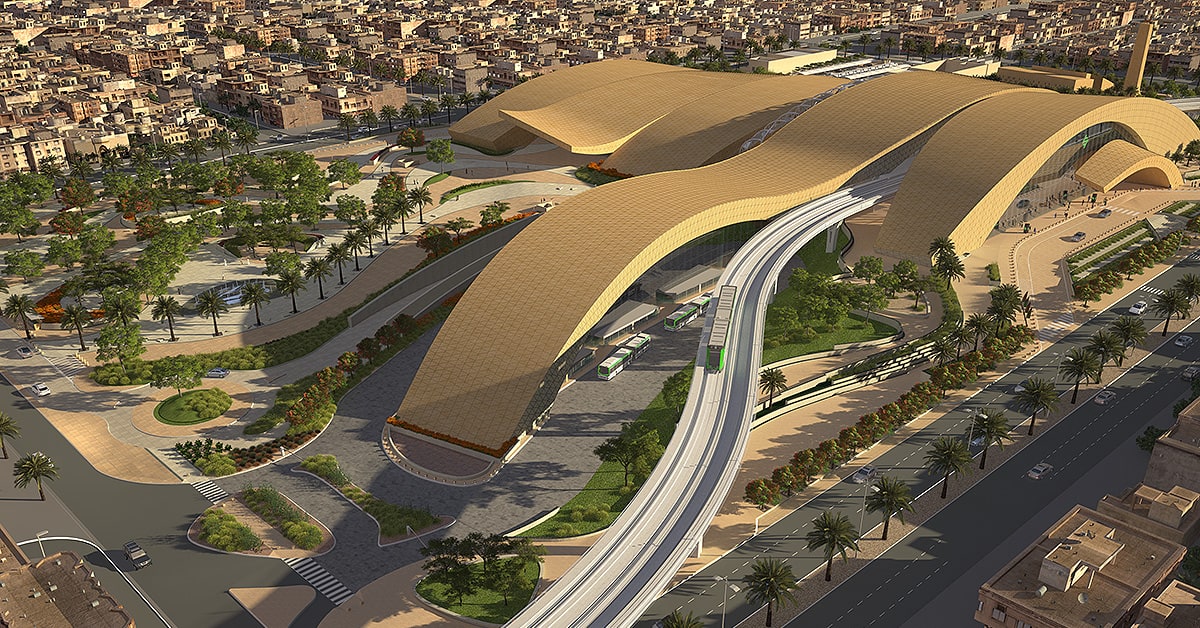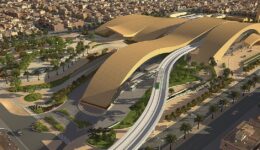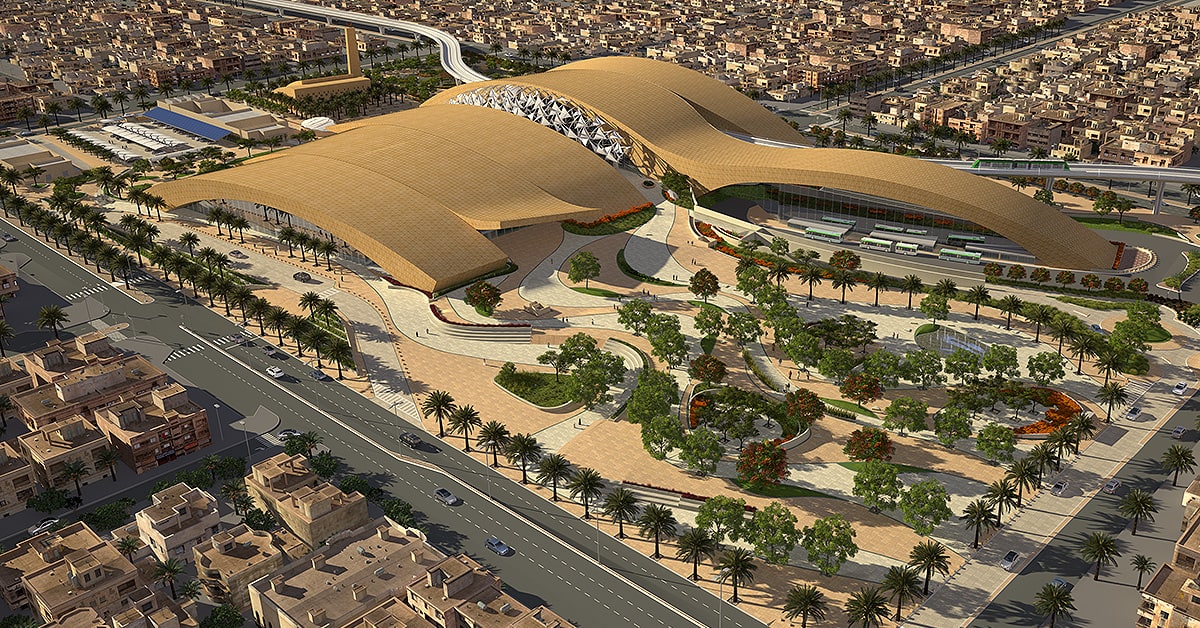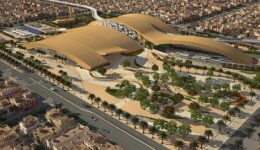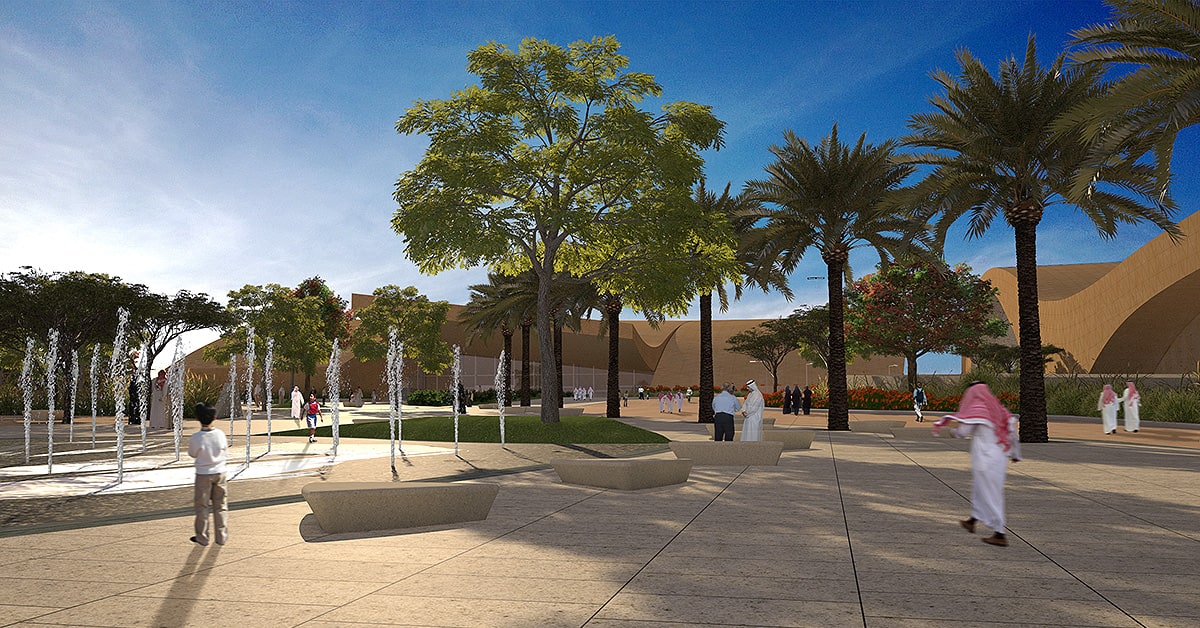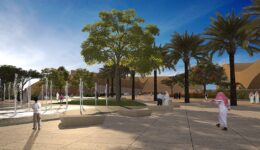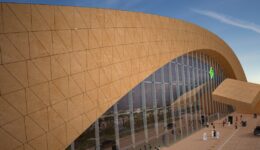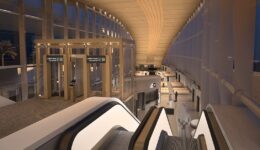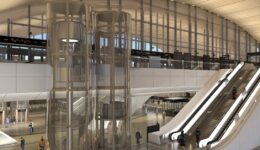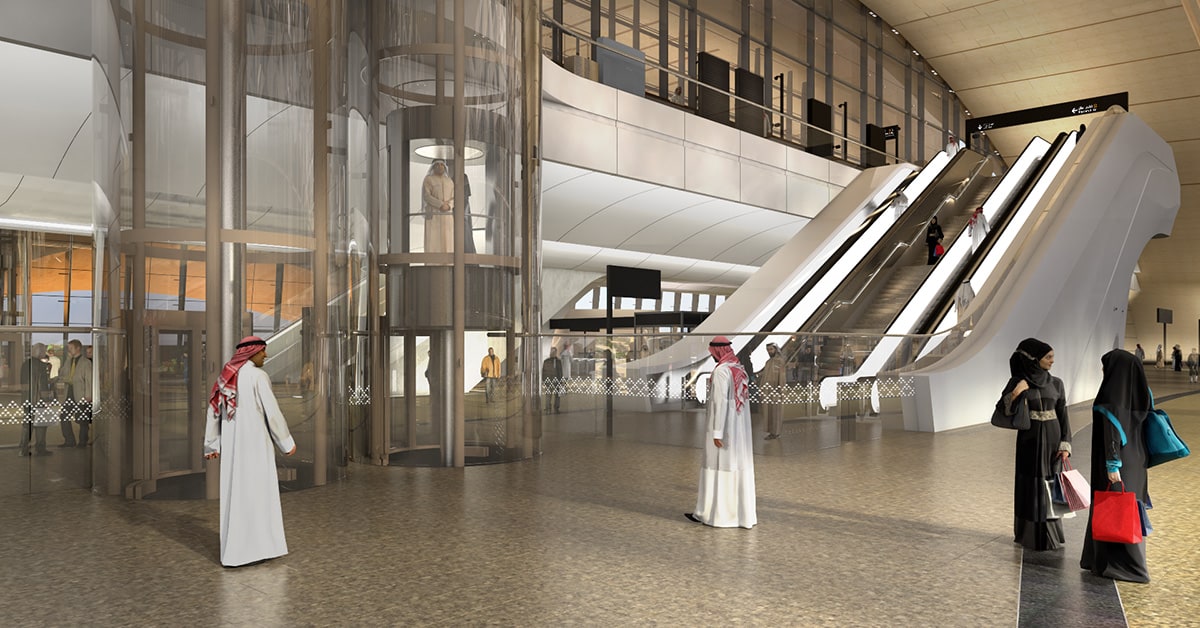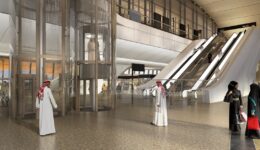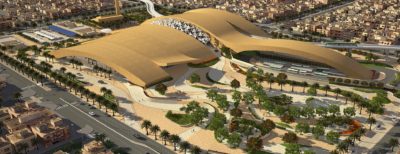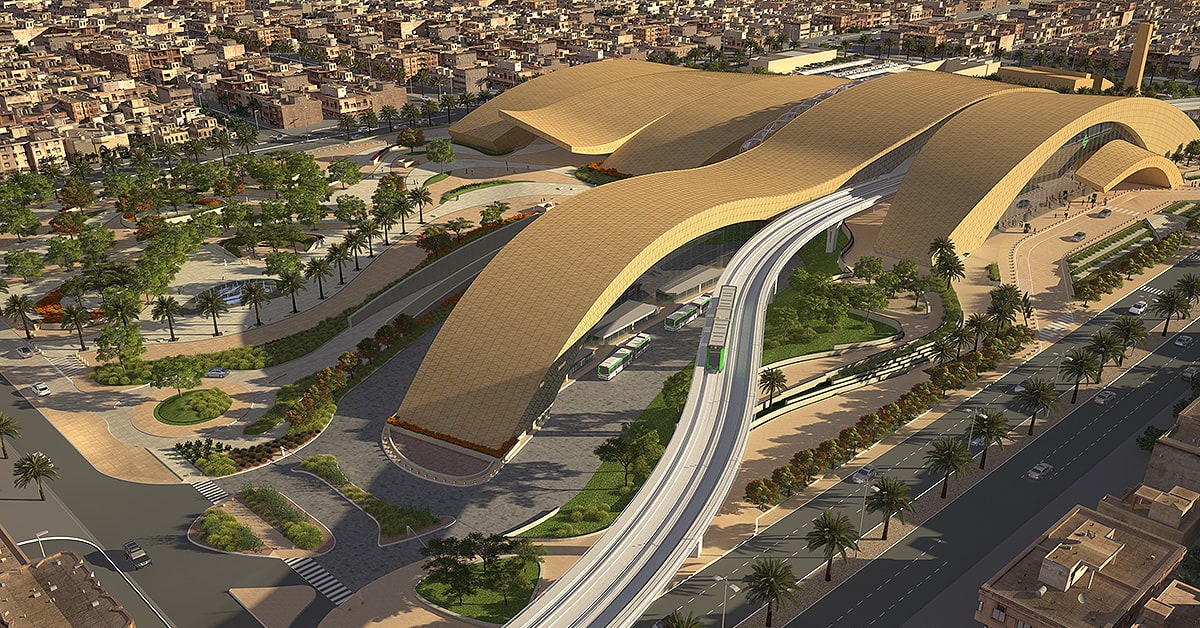 Exterior view of the Riyadh Metro Western Station. 3D Render © Omrania.
Exterior view of the Riyadh Metro Western Station. 3D Render © Omrania.
After years of prioritizing cars, Riyadh adopted a more balanced transportation strategy. The central element of this sustainable approach is the newly established Riyadh Metro, which includes a significant, multi-modal station designed by Omrania.
Urban mobility has become a central issue in Riyadh. The Saudi capital city’s explosive growth from 150,000 inhabitants in 1960 to over 7 million in 2020 was largely accommodated by the construction of freeways and automobile infrastructure. However, with the city’s population forecasted to continue growing rapidly in the coming decades—and traditional, car-centric solutions seen as unsustainable—national and city leaders embraced a bold, new mobility strategy. The Riyadh Metro, now commencing service, is a vital feature of Vision 2030, the comprehensive development blueprint adopted by the Kingdom of Saudi Arabia.
At the forefront of global innovation
The King Abdulaziz Project for Riyadh Public Transport (KAPRPT), better known as the Riyadh Metro, is a USD $22.5 billion initiative that establishes the largest public transportation system in the Gulf region. With its light rail and bus lines, KAPRPT’s scale is comparable to that of Chicago or Hong Kong. The project encompasses a 176 km light-rail network of driverless trains along 6 metro lines with 84 stations; 80 bus routes with 2,860 bus stops, including several bus rapid transit (BRT) lines; and multiple park-and-ride facilities. This significant investment in public transit is expected to address traffic congestion and air pollution while reducing fuel consumption and carbon emissions.
Riyadh Metro is the largest single-phase public transport project ever developed. It therefore represents a series of epic shifts at the scale of metropolitan planning and identity. It changes how people move through the city, how people invest in the city, and how the city develops sustainably with its environment. It also changes the image of the city—for residents and visitors.
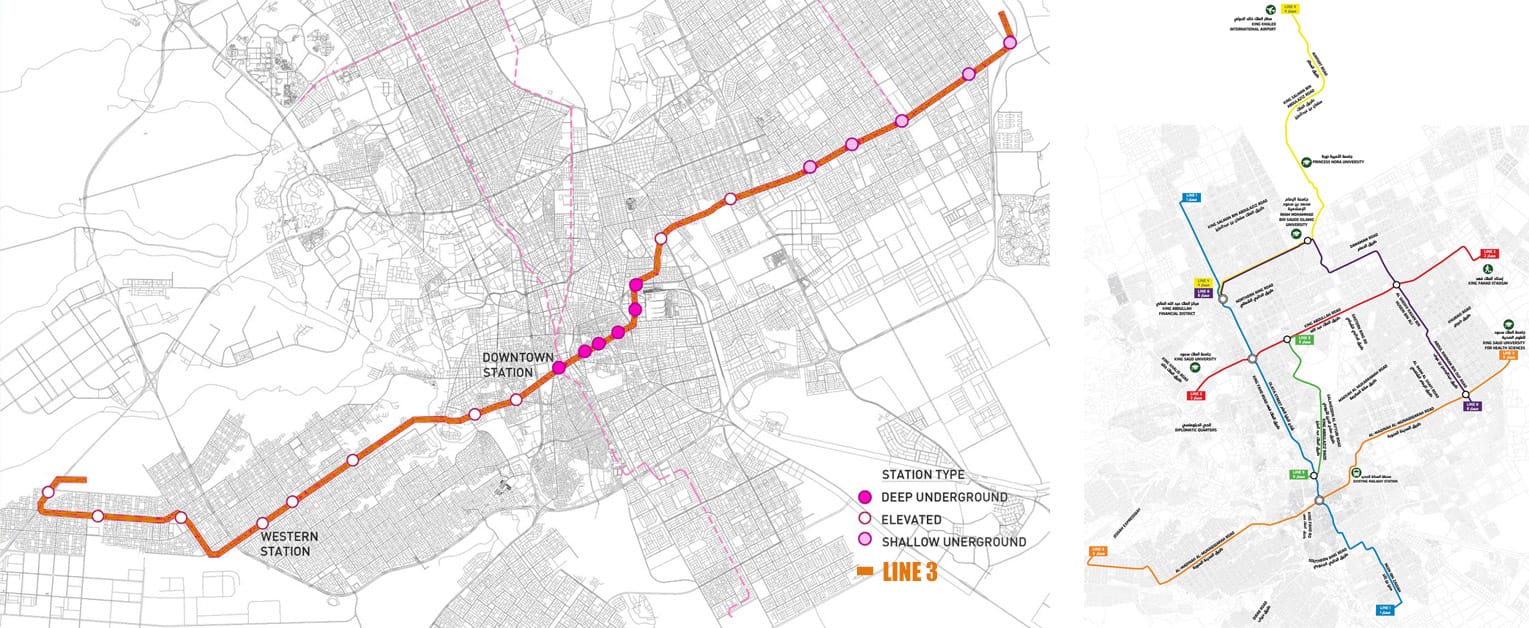
Riyadh Metro map, and Line 3 map. Drawing © ADA
Omrania designs an ‘iconic station’
Omrania was commissioned to design one of four important metro stations where light rail and bus rapid transit (BRT) lines converge. Designated as “Iconic Stations” due to their multi-modal connections and daily parking facilities, these four prominent stations are also meant to be architectural landmarks. The other three are designed by Zaha Hadid Architects, Snøhetta, and Gerber Architekten. Omrania, along with these international firms, was selected through a competition organized by the Arriyadh Development Authority.
Exterior views of the Riyadh Metro Western Station. 3D Renders © Omrania.
The station entrusted to Omrania’s design—including architecture, interior design and landscape—was the Western Station on the No. 3 (Orange) Line, located near the rapidly growing district of Al Badee’a. Omrania believed it was essential to design the station for both functional excellence—including durability, energy efficiency, and occupant comfort—and civic presence. Now in the final stages of construction, the 117,000-square-meter ensemble of buildings and infrastructure includes a Friday mosque as well as underground parking and public services such as a post office and police station.
At the heart of the complex is the 40,000-square-meter station, whose softly undulating roof forms are inspired by sand dunes. Commuters will find it easy and pleasant to navigate the station’s soaring concourses and shaded entrances. Golden Riyadh limestone cladding and other locally sourced materials allow the station to blend with its context, while daylight gently suffuses the interior. Exemplifying sustainable design, this high-tech facility is targeting LEED Silver certification. The column-free design offers unobstructed views and a spacious environment, facilitating smooth traffic flow. To provide a welcoming atmosphere, the station features comfortable café stations in both the metro and bus areas, providing an opportunity for commuters and visitors to unwind.
The Western Station is more than just a transportation hub. It serves as a symbol of Riyadh’s transition to a more sustainable city—and its leadership in 21st-century urban mobility.
Interior views of the Riyadh Metro Western Station. 3D Renders © Omrania.
The Western Station, designed by Omrania, not only serves as a transportation hub but also symbolizes Riyadh’s commitment to a more sustainable city and its leadership in 21st-century urban mobility.






